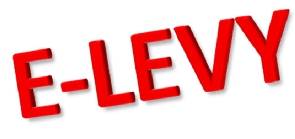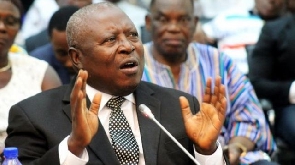The government could have made more money from the Electronic Levy (E-Levy) if the rate had been reduced to 0.5 per cent, the Center for Economics Finance and Inequalities Studies (CEIS), has said.
“If the rate of the E-Levy had been revised to 0.5 per cent, and 54 per cent of the existing active users patronise Mobile Money transactions, the expected revenue for this year will have been a little above ¢2.64 billion,” CEIS said in its latest report on the country’s digital economy.
The objective of the study titled “Half a loaf is better than none: The maximum from Ghana’s E-Levy in years to come,” is to provide the government, Ministry of Finance, Bank of Ghana and the Ghana Revenue Authority with professional research-based perspective of the E-Levy devoid of political connotations."
It is also to provide a widely accepted 0.5 per cent E-Levy revenue forecast for the next four years and assign reasons why the official 1.5 per cent revenue forecast would not be achieved.
The report said that the estimate was greater than the total revenue the government anticipated from the levy for the year 2022, adding that the revenue was expected to rise by 21.4 per cent to yield GH¢3.21 billion in 2023.
“The forecasted revenue is expected to reach GH¢4.432 billion by 2025 which will be greater than that government’s expected revenue for the same period,” the report said.
It said based on the standard law of demand, if the relative price decreased from 1.5 per cent to 0.5 per cent, the quantity demanded of ‘Momo’ transfers would increase.
The Report said the government would be better off reducing the E-Levy to 0.5 per cent instead of the 1.50 per cent presently being charged.
“The E-Levy is a good tax handle that must be maintained considering the dire fiscal stance of Ghana,” the report said, adding that “An E-Levy rate of 0.5 per cent promises much higher revenue to government compared to the current 1.5 per cent E-Levy.”
It said the initial revenue estimate of GH¢4.5 billion at 1.5 per cent was over ambitious and had the potential of affecting Ghana’s cash-lite agenda.
E-levy as a conduit to get the informal sector to contribute to national income has failed, as the informal sector is the most active group exploring the current E-Levy loopholes.
The report said there had been a general decline in the growth trends of Momo use from 2013 to 2021.
“It appears, there is a saturation point for mobile money transactions; with this, any attempt at levying users would not drive usage and the anticipated revenue would be difficult to achieve,” the report said.
It said as the E-levy depends on value, the maximum of GH¢100.00 exemption per day, although protecting the poor, opens up the avenue for users of mobile money to schedule their transactions and use other strategies to avoid the payment of E-Levy.
Business News of Tuesday, 15 November 2022
Source: ghanaiantimes.com.gh













